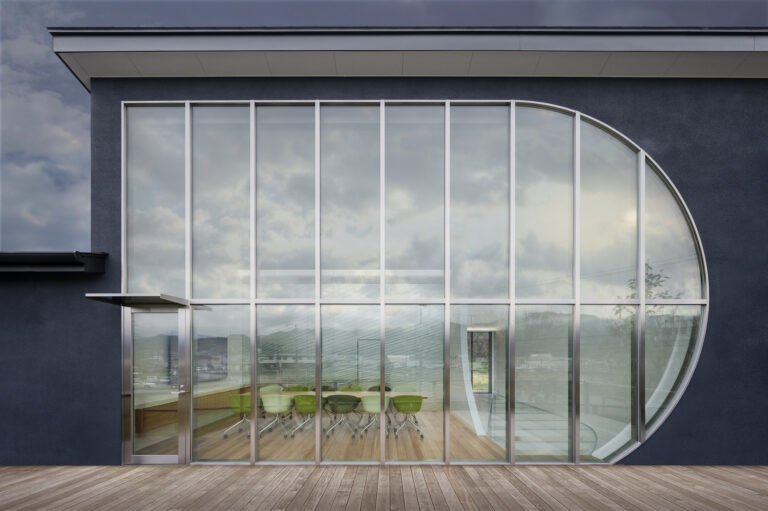Zaha Hadid Architects, Sweco and Tredje Natur Selected to Design the New Aarhus Stadium in Denmark
Zaha Hadid Architects, Sweco and Tredje Natur Selected to Design the New Aarhus Stadium in Denmark

In collaboration with architecture and engineering consultancy Sweco and landscape architects Tredje Natur, Zaha Hadid Architects was selected to deliver the new Aarhus football stadium in Denmark. Dubbed the “Arena of the Forest,” the stadium will be embedded within the city’s Marselisborg forest, offering public and ticketed spaces all year round while revealing glimpses of the surrounding landscape. Scheduled for opening in 2026, the complex will cover 69,912 square meters, including the Aarhus arena and the renovation of the adjacent ‘Stadionhallerne’ building completed in 1918 by architect Axel Høgh-Hansen.
The design of the new building is driven by reusing the existing stadium’s materials, reducing environmental impact, and enhancing the experience and historical value. Home to Aarhus Gymnastikforening (AGF) football club, the current Aarhus Stadium opened in 1920. While a series of refurbishments were undertaken between 1948 and 2004, the existing stadium no longer meets the standards required to host large-scale events. In addition, the long distances between spectators and the football pitch within the current stadium were an obstacle to a true game experience.

The arena will comprise new public areas for a wide variety of civic, recreational, and cultural uses by the local community and visitors to the park. Open colonnades made of 47-meter tall timber ribs and a new transparent roof define a sheltered 360-degree public circulation and maximize the potential to jointly host ticketed and open events. Regarding the interior, the supporters are designed to be set as close as possible to the field of play in a single-tiered seating bowl. Contrary to the old stadium, fans will be very close to the field of play, creating an immersive encounter for everyone at the match.
Our proposal is celebrating the proud spirit of the club and its importance for the City of Aarhus. Paying tribute to both the architectural heritage on site and the unique nature that surrounds it will serve as a welcoming gesture to the public. On any occasion!- Ole Schrøder, partner in Tredje Natur
To reduce quantities to the absolute minimum where strength and robustness add the greatest possible value, the new Aarhus Stadium is characterized by three primary materials: concrete incorporating recycled aggregates for the columns; locally procured, upcycled, and recycled steel for the trusses; and timber from local certified sustainable sources for the façade cladding. In addition to the positive effect on the new stadium’s environmental impact, reusing the old stadium’s components will contribute to the local anchoring of the project.

ZHA proposal was chosen from 42 Danish and international architectural teams for “understanding and interpreting the stadium’s unique location within the ancient Marselisborg forest, its Nordic profile, and its adjacency to the historic Stadionhallerne,” stated the organizers. Likewise, Zaha Hadid Architects was recently commissioned for the Hangzhou International Sports Centre in China as part of Hangzhou’s Future Science and Technology Cultural District. The project comprises a 60,000-seat football stadium, a 19,000-seat indoor arena, and two 50-meter pools.







